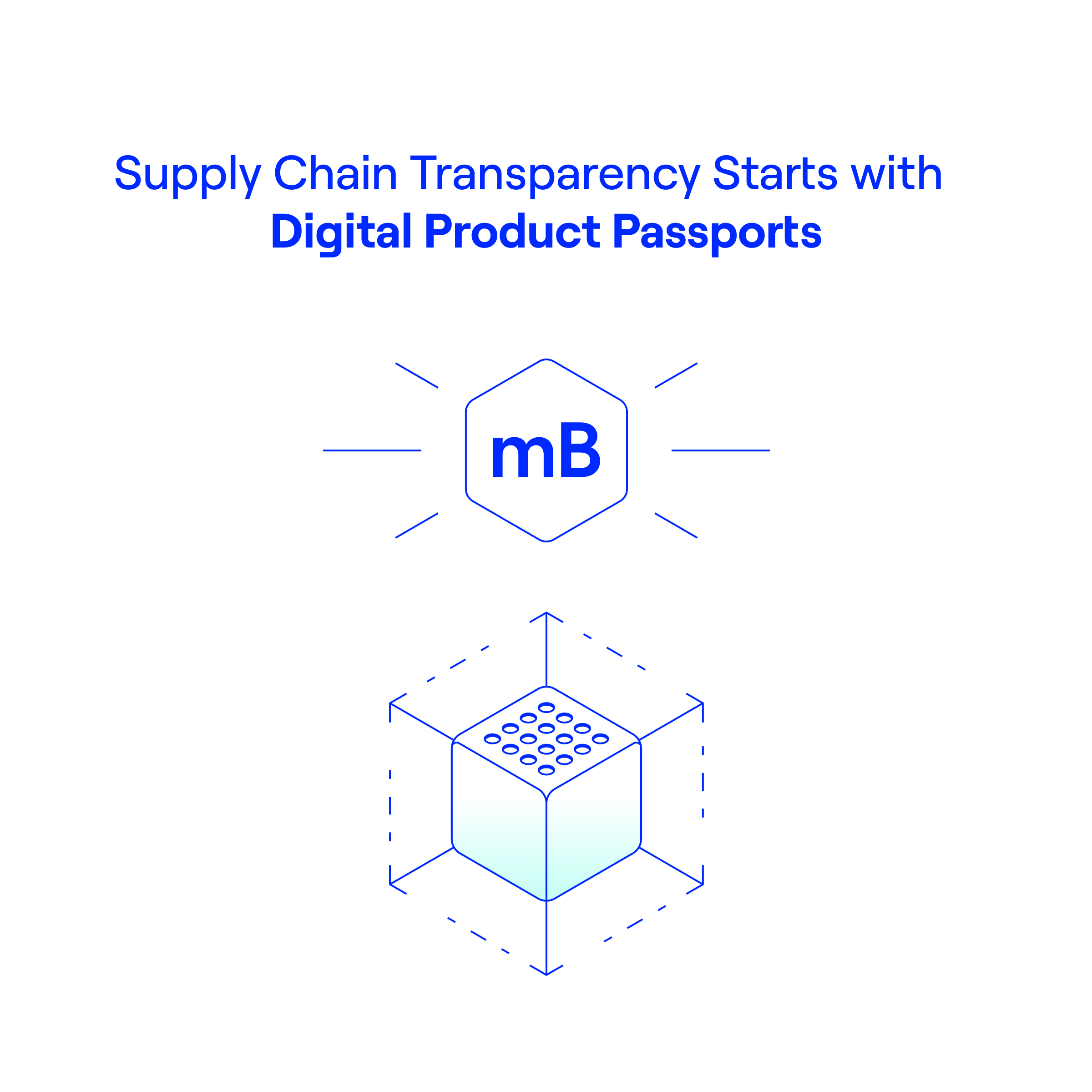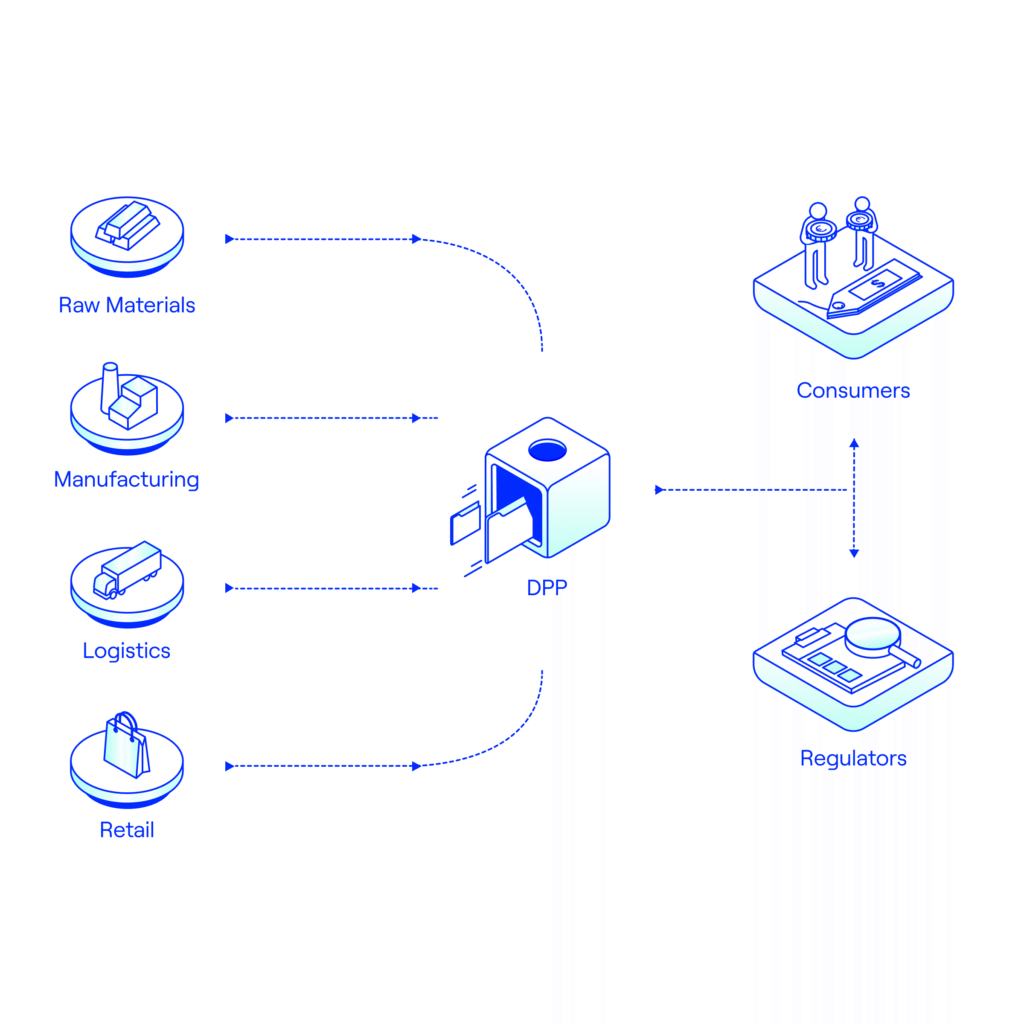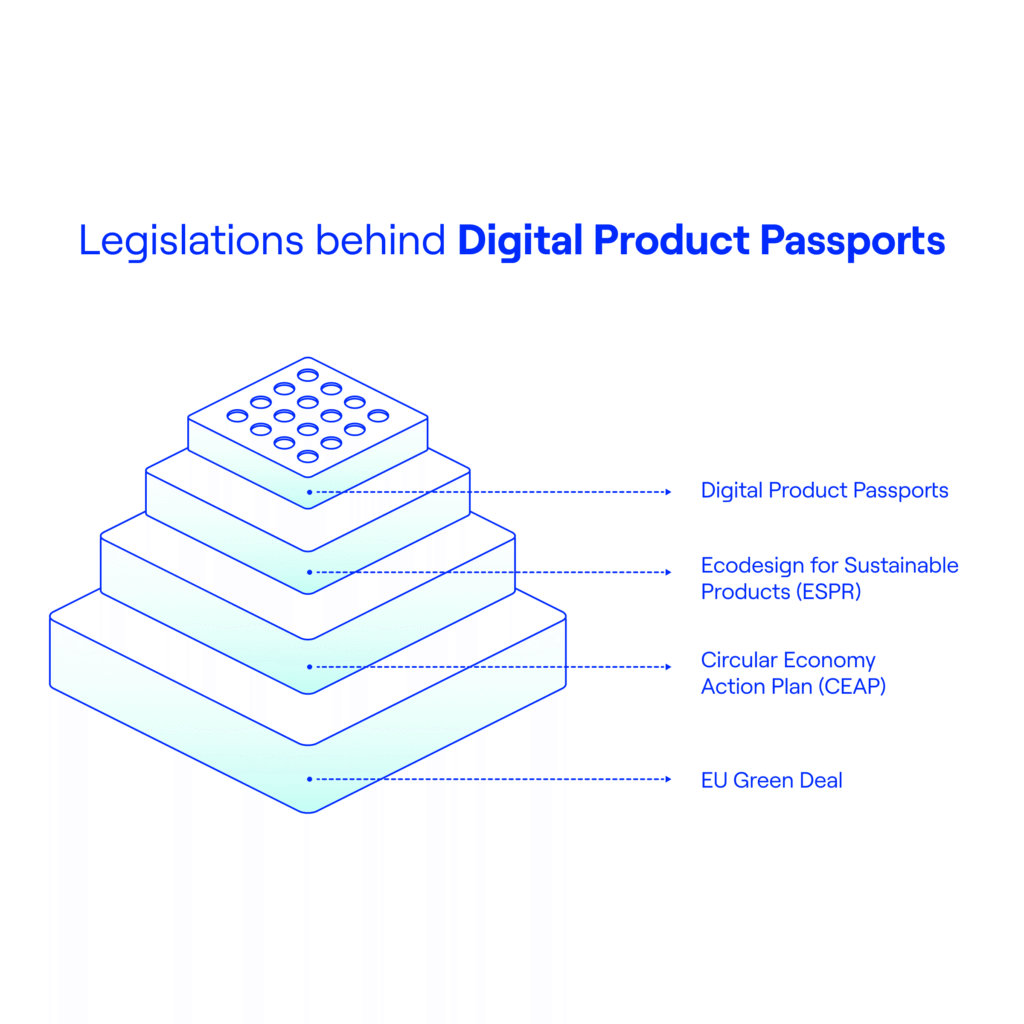
In this article, we delve into sustainability-related legislations in the EU and focus on why we think distributed ledger technologies are the perfect infrastructure on which to build the upcoming Digital Product Passports. Let’s jump right in.
The Problem: A Lack of Traceability
When you buy a product, whether it be as simple as an apple from a local farmer’s tree or as complex as an Apple from the fancy downtown boutique, what do you know of its origins? Sustainable sourcing of raw materials, ethical labor practices, and environmentally-conscious packaging and shipping all contribute to the growing list of considerations that the modern consumer asks of manufacturers and retailers.
In fact, a 2023 survey by the European Commission found that “73% [of respondents] say the impact of the product on the environment is ‘very important’ or ‘rather important’ when making a purchasing decision.”
So the demand for detailed, consumer-accessible sustainability information is clearly there. But are businesses adequately meeting this demand?
Well, businesses soon will be required to in order to continue selling to EU customers.
Digital Product Passports (DPPs) are the EU’s answer to meeting the interests of their citizens and working toward a more sustainable future. In this article, we’ll unpack the regulations behind DPPs and delve into why we think distributed ledger technologies (DLTs) are an ideal technical solution for streamlining compliance.

The EU’s Solution: Digital Product Passports
A 2020 study published by the European Commission found that over half (53.3%) of environmental claims were “potentially misleading.” Furthermore, of the 150 claims studied, it was found that for “specific features of the claims, 54 claims were identified as unclear and ambiguous, 47 were assessed as inaccurate and 61 as unsubstantiated.”
Without verifiable data, companies can claim all sorts of environmental benefits without sufficiently backing them up. This lack of transparency goes beyond just marketing: it also extends to recycling. If we don’t really know what a product is made of, we can’t recycle it properly, leading to more waste and missed opportunities to reuse products.
Against a backdrop of hushed murmurs of “greenwashing” is where digital product passports start making even more sense.
In a nutshell, DPPs are digital records that include a plethora of item-level information about products throughout their lifecycles. Itemised identifiers mean, for example, that if product gets recalled due to issues with batch numbers 147 through 182, all a consumer needs to do is scan the QR code of the product’s packaging to find out if theirs is affected.
However, the possibilities that DPPs afford truly are endless. For example, consumers could learn about the ethical labor practices of their tiramisu’s coffee farmers, bring up an authenticity certificate for a designer watch, or find out how best to recycle their bluetooth headphones once they stop working.
While we could dedicate pages to talking about the circular economy and DPPs themselves, we want to briefly turn our attention to the EU legislations behind DPPs, before really honing in on a potential technical design running on distributed ledger technologies.

Legislations behind DPPs
DPPs are not a standalone initiative, but rather a part of a wider effort from the EU to promote sustainability and a circular economy. Put briefly, these interrelated efforts include:
- European Green Deal: The European Green Deal is the EU’s flagship sustainability policy. The goal is simple: make the European Union climate neutral by 2050. The most immediate goal is to reduce net greenhouse gas emissions by at least 55% by 2030.
- Circular Economy Action Plan: Under the EU Green Deal umbrella is the Circular Economy Action Plan (CEAP). Adopted in 2020, this policy promotes circular economy processes through targeting how products are designed and keeping resources within the EU economy for as long as possible.
- Ecodesign for Sustainable Products: The Ecodesign for Sustainable Products Regulation (ESPR) falls under the CEAP and is a key piece of legislation that requires products sold in the EU to include a Digital Product Passport. The ESPR shares similar goals to the CEAP and applies to a wide range of industries spanning automotive, electronics, textiles, and batteries.
- Digital Product Passports: This finally leads us to Digital Product Passports. DPPs are ‘documents’ that follow products throughout their lifecycle journeys and are instrumental to achieving the vision of a circular economy. This data will be continuously updated and provide detailed information. Examples (warning: PDF link!) of what data is included on DPPs are: product name, model, manufacturing date, and materials used. It can also contain information pertaining to ownership, repairs, sustainability, and carbon footprints.
DPPs & Distributed Ledger Technologies: An Ideal Match
All sounds great, right? But there’s still an elephant in the room: How is this supposed to actually work? And that’s where we would like to throw our hat in the ring and provide a potential technical solution: distributed ledger technologies (DLTs).
After all, this is a massive amount of data that needs to be accessible to businesses, consumers, and governments alike. Well, not only accessible, but trustworthy as well.
In the past, we’ve explored in depth about why we feel DLTs are an ideal match for supply chain transparency and all of the conclusions from that article ring even more true now that DPPs are in the fray.
The single biggest benefit we would like to highlight is that, by design, distributed ledgers are immutable. Once data is recorded to the ledger, it cannot be altered or tampered with. If a mistake is made, a correction must be appended to the original entry. This ensures maximum reliability and transparency for the data: there’s no potential to hide behind sneaky changes or deletions.
Furthermore, DLTs offer very fine-grain access controls. From the same raw data set, access to differing combinations of data can be granted to business partners, regulators, and consumers. This means that each party only has access to the portion of the raw data that they need, ensuring privacy and security.
If you’re interested in reading more about the benefits of integrating DPPs and DLTs, check out this 2024 report by the EUBlockchain Observatory & Forum that was published by the European Commission. There are many quotable nuggets in that report, but probably the most concise is:
The key advantages of using [distributed ledger technologies] for digital product passports, therefore, include improved transparency, less fraud, improved compliance, sustainability, supply chain efficiency, and consumer empowerment.
Depending on the implementation, businesses can also seamlessly integrate DPPs into existing ERP/PIM/PLM systems by means of a basic plugin. With such a plugin, data can simply be automatically synced with the distributed ledger of choice instead of a private server. This streamlined approach ensures zero interruptions to workflow and that no new employee training is required.
Examples of DPP & DLT Integrations
Despite DPPs being a relatively recent development, there are already numerous examples in the wild of the DPP-DLT handshake:
MyLime uses DLTs for DPPs for its bicycles to track production, transportation, and sales.
“We are proud to be the first company in the world to launch a vehicle equipped with an NFT on the market and to create an industrial application of blockchain technology. We are delighted to collaborate with a brand that represents the excellence of Made in Italy, like Colnago. This is not an end goal, but the starting point of a journey that will involve the world of mobility and luxury, enhancing the concept of ‘ownership experience’ and bringing the idea of ‘hyperluxury’ to life.”
— Elena Moglia, CEO MyLime
Coach is using DPPs to allow consumers to authenticate products that they may want to resell second-hand. Each Coach product is linked with detailed information about it, such as materials used and care services. This information can also be automatically loaded into a second-hand retailer called Poshmark to ensure seamless data sharing.
With the help of a simple QR code, Scantrust enables consumers to have in-depth insights into the traceability data for everyday goods like coffee and skincare products. Behind these QR codes, unique to each individual package of a given product, consumers can find such information as: counterfeit product detection, installation dates for critical machine parts, and ingredient and farmer origin data for food products.
Challenges of Intertwining DPPs with DLTs
Introducing distributed ledger technologies as a solution for digital product passports is of course not without its challenges.
One key obstacle is interoperability. Different DLT and DPP platforms may not be fully compatible, making seamless data exchange difficult. Without widespread adoption and standardised interoperability, the full potential of this marriage will not be realised. This challenge for DPPs isn’t unique to DLTs however: it applies to any technology that is used to manage digital product data.
Another challenge facing the intertwining of DLTs and DPPs is securing buy-in from all stakeholders. Businesses across the product lifecycle may be reluctant to commit to full transparency, whether due to cost, complexity, or other concerns. Ensuring stakeholder commitment will be a challenge regardless of the technology used, so the EU may find greatest success by mandating certain aspects of implementation while still ensuring a fair and competitive market for service providers.
Conclusions
Sustainability regulations are coming and they’re here to stay. Even though talks of “compliance” cause many business owners to groan, we can’t help but feel that this is a massive opportunity to streamline preexisting B2B workflows and improve consumer confidence, all while genuinely doing some good for our planet.
If you’re interested in learning more about our “data highway” approach that’s designed to plug right in to your current processes, check out our page on Product Passports for more info or reach out to us for a free consultation.
